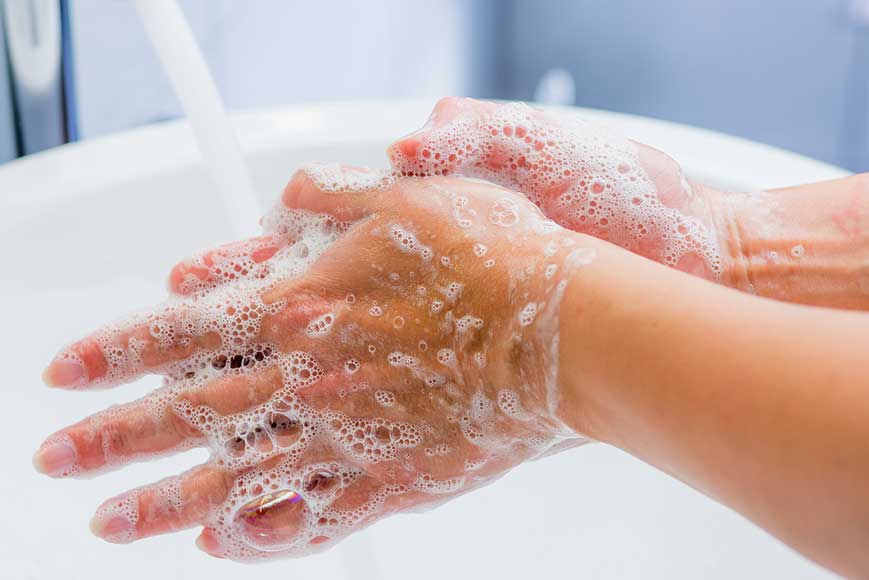The Importance of Hand Hygiene in a Clinical Setting
According to West, Resendiz, and Lustik (2018),hand contamination of healthcare workers is responsible for approximately 10% to 40% of healthcare-associated infections (HAIs). HAIs are infections that are associated with any treatments, devices, or interventions performed at a healthcare facility (Aziz, 2014). Consequentially, practicing proper hand hygiene techniques, such as hand washing or the use of alcohol-based sanitizers, is one of the most important measures in preventing cross-contamination in the healthcare setting (West, Resendiz, & Lustik, 2018). Educating patients on proper hand hygiene practices can lead to less infectious outbreaks, and the implementation of these practices can help ensure patient safety and quality healthcare. The purpose of this paper is to analyze benefits of practicing proper hand hygiene techniques, different methods of maintaining proper hand hygiene, and ways to improve hand hygiene compliance in the clinical setting.
Benefits
There are several benefits to practicing proper hand hygiene techniques in the clinical setting. First and foremost, hand hygiene is the leading intervention against the transmission of bacteria and other pathogens which cause infectious disease in the clinical setting (West et al., 2018). This is due to the fact that the most common way that HAI causing pathogens are transmitted is via the hands of contaminated healthcare workers. Such hand contamination can occur via interaction with the environment, direct contact with patients, or indirect contact by touching or handling relevant equipment (Aziz, 2014).
One study by Costa et al. (2017) examines packaging for surgical instruments reuse, and the frequency of hands touching said instruments in one hospital’s sterilizing service unit packing area. The study found that the negligent hand hygiene standards and lack of compliance of glove use resulted in significant microbial and protein contamination on surgical instruments during the packing process. Nurses and patients alike can benefit from this information, as educating patients not only ensures that the nurse is aware of proper practices, but also assist the patient in their role of preventing HAIs (Journal of Community Nursing, 2014).
Methods
The Centers for Disease Control and Prevention (as cited in West et al.) state that hand hygiene can be described as any one of three methods: thorough hand washing with soap and water, the use of antiseptic handwash, or the use of surgical hand antiseptic (secondary source reference/year needed). Their guidelines maintain that before and after each patient interaction, healthcare workers should wash their hands with soap and water or sanitize with an alcohol-based solution, at minimum. According to Aziz (2014), healthcare workers are encouraged to follow a seven-step technique for hand washing or applying other antiseptic hand sanitizers. Following this technique is essential as incorrect practice may leave areas of the hands still contaminated with microorganisms (Journal of Community Nursing, 2014).
Improving Compliance
According to West et al. (2018), “estimates of hand hygiene compliance among healthcare workers range from 30% to 60%” (p. 214). First and foremost, it is essential for adequate hand hygiene facilities to be available in order to improve and maintain hand hygiene compliance (Aziz, 2014). Secondly, it is essential for healthcare facilities to monitor hand hygiene compliance and practices in order to ensure quality care and patient safety from HAIs (Aziz, 2014). In one U.S. military hospital, workers directly interacting with patients are required to complete online hand hygiene refresher training annually (West et al., 2018). At the same hospital, staff representatives conduct monthly audits on hand washing compliance to ensure that all procedures are being followed as directed.
Thirdly, “when healthcare workers seldom encounter healthcare-associated infections, they will consider the odds of causing infections through poor hand hygiene negligible” (Caris et al., 2018, p. 352). To combat this, the use of behavioral “nudges,” such as message-framing posters near hand hygiene stations, is shown to improve hand hygiene compliance (Caris et al., 2018). Though, it should be noted that, all things considered, there is not simply one answer to improving hand hygiene compliance. Multiple strategies should be utilized to achieve maximum intervention (Caris et al., 2018).
References
- Aziz, A.-M. (2014). Hand hygiene compliance for patient safety. British Journal of Healthcare Management, 20(9), 428–434. Retrieved from http://search.ebscohost.com.ezproxylocal.library.nova.edu/login.aspx?direct=true&db=ccm&AN=107827854&site=ehost-live
- Caris, M. G., Labuschagne, H. A., Dekker, M., Kramer, M. H. H., van Agtmael, M. A., & Vandenbroucke-Grauls, C. M. J. E. (2018). Nudging to improve hand hygiene. Journal of Hospital Infection, 98(4), 352–358. https://doi-org.ezproxylocal.library.nova.edu/10.1016/j.jhin.2017.09.023
- Costa, D. M., Lopes, L. K. O., Tipple, A. F. V., Castillo, R. B., Hu, H., Deva, A. K., & Vickery, K. (2017). Effect of hand hygiene and glove use on cleanliness of reusable surgical instruments. Journal of Hospital Infection, 97(4), 348–352. https://doi-org.ezproxylocal.library.nova.edu/10.1016/j.jhin.2017.06.018
- The importance of hand hygiene in preventing the spread of infection. (2014). Journal of Community Nursing, 28(2), 75–78. Retrieved from http://search.ebscohost.com.ezproxylocal.library.nova.edu/login.aspx?direct=true&db=ccm&AN=107901586&site=ehost-live
- West, G. F., Resendiz, M., & Lustik, M. B. (2018). Assessing hand hygiene attitudes of inpatient nursing personnel in a US military hospital. Journal of Hospital Infection, 100(2), 214–217. https://doi-org.ezproxylocal.library.nova.edu/10.1016/j.jhin.2018.05.012
Cite This Work
To export a reference to this article please select a referencing style below:
Related Content
All TagsContent relating to: "hand hygiene"
Hand washing is the most important and effective way of preventing and controlling infection from healthcare staff. The aim of hand hygiene is to remove micro-organisms carried on the skin, the skin can harbour bacteria and may be an infection risk to patients.
Related Articles


